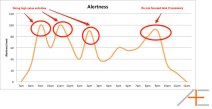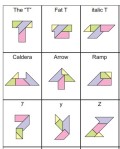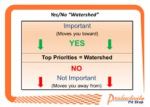This morning, the ocean was still showing the effect of strong winds the past few days, with waves rumbling toward the shore, spitting out more than the usual crop of kelp at Three Anchor Bay. Yet it is almost as if the rough sea was just superimposed on the natural rhythm of ocean tides – spring tide, neap tide, high tide, low tide. The fact that the ocean is rough today and calm tomorrow does not affect the natural rhythm.
Our everyday lives are pretty much the same. We have a natural rhythm and sometimes life is calm and at other times it is chaotic. But the underlying pattern says pretty much the same.
How about knowing your “productivity rhythms” that stay pretty much the same, and on which chaos and calm are superimposed?
I’ve just read an article in the Harvard Business Review about the human circadian rhythm (biological clock). The circadian rhythm for humans is roughly as follows (there are variations to this pattern, e.g. someone being a “morning person” or a “night owl”. But the basic pattern is there. You are least alert at around 03:30 in the morning, and then your energy and alertness slowly increase until it reaches a peak just after noon and then dips at around 15:00 (good time to take a nap to re-energise) after which it increases again for a second peak round about 18:00, after which it declined for the rest of the evening until 03:30 the next morning. Someone at one of my workshops said that her “energy low” lasts between 8 and 5 every day!
Can you see how dumb we can be by using our mornings to read and reply to emails whereas we should be doing work that requires higher levels of energy and alertness? Then we have lunch and then when we are heading down the slope to the 15:30 dip we want to do work that requires our full attention and energy. And as energy and alertness increase again, we end the work day!
Maybe one of the best productivity tools you can develop is to understand your own circadian rhythm and use it to guide the kind of work you do during different times of the day – let your commitments and activities follow your body clock!
Take a piece of paper and track your levels of energy, focus, tiredness and hunger every hour on the hour, for a week or more. Just write down how you are feeling at that time. You may want to use a 10-point scale if you want to, where 10 is excellent and 1 is poor.
Investigate your results, and you are sure to some kind of a pattern.
Use this to decide what activities you will do when during the day – and see your productivity and well-being improve.
Quote: “The whole universe is based on rhythms. Everything happens in circles, in spirals.” – John Hartford
What’s happening?
2016 public workshops: “Productivity Breakthrough: 8 Basic Work Habits of Exceptionally Productive People (Outlook Edition)”
In-house Productivity Breakthrough workshops customised for your team.
Quite a number of people have expressed interest to join a Productivity Mastery Group Coaching Programme for teams and other groups in organisations. Details still to be fleshed out, but if you would like me to keep you in the loop as well, just click here to let me know.






